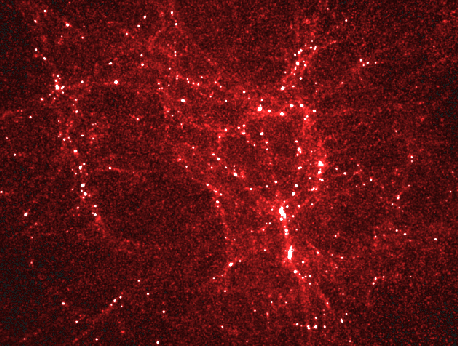Astronomy Picture of the Day
Discover the cosmos! Each day a different image or photograph of our fascinating universe is featured, along with a brief explanation written by a professional astronomer.
February 16, 1996

The Early Universe
Credit:
F. Summers (Princeton),
D. Cox, R. Patterson, E. Wesselak, and B. Sanders
(NCSA),
L. Carpenter
(Pixar),
GC3,
Cosmic Voyage,
Smithsonian



